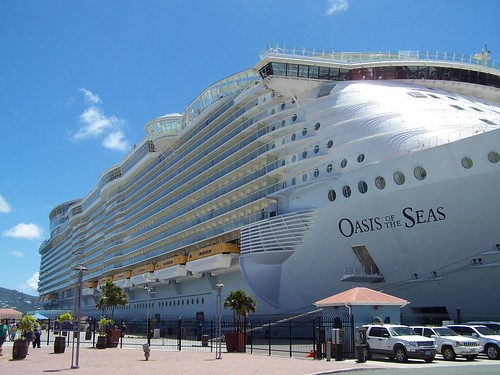Posts tagged 4.4 The Private Firm as a producer and employer
Labour Intensive versus Capital Intensive
Aug 21st
1) Find out / discuss the meanings of these two phrases
2) Can you tell which is which in the videos below?
Economies of Scale
May 24th
Image: Some rights reserved by Cory M. Grenier
Starter
What cost advantages are there for big firms? Watch the video clip below.
On board world’s biggest cruise ship Oasis of the Seas
Image: Some rights reserved by Paul Dickerson
Resources
There are five main types of Economies of Scale for you to consider. The resources give a little bit of information about each one.
1) Purchasing Economies
2) Financial Economies
3) Managerial Economies
Study this business structure and consider how it is more efficient than a company which is a sole trader
4) Technical Economies
5) Marketing Economies
General resource for cross-referencing
Demonstrating Your Understanding
Level 3 Activity – Quite tricky – makes you think. Complete the first two tasks at the end of this page, but use the 5 economies of scale above. The scores in brackets are not the same as IGCSE scores, so you can ignore them. As you do so, be sure to explain what each type of economies of scale means Extra Task – include Risk Bearing Economies.
Level 2 Activity – Medium Difficulty – Think of some of the ways in which IKEA uses the five Economies of Scale listed above. even if you can’t give specifics, give examples that you think would apply to IKEA (or another large retail firm). This pdf file referring to IKEA in Bangkok, Thailand, might give you some ideas. As you do so, be sure to explain what each type of economies of scale means. Extra Task – include Risk Bearing Economies.
Level 1 Activity – Accessible and Useful. Extra Task – research and comment on Risk Bearing Economies. Having done this you should be able to answer a question like this ‘Explain what is meant by economies of scale’ (6)
Describe pricing and output policies in perfect competition and monopoly
May 13th
First, you need to find out answers to the following broad questions:
- What is perfect competition?
- What is a monopoly?
The video below is a very good starting point. You can ignore the early bit on costs.
Activity 1) Research how these two market types set their price and output. Can they control these two things (price and output)? If so, how? If not why not? Can you find simple diagrams to help explain these. Be careful though – this can lead to complex economics that is not needed for IGCES economics. You don’t need diagrams which include marginal cost, marginal revenue, etc, Check with your teacher if possible.
Activity 2): Create two collage images, made up of photographs you have found online, ideally those with a creative commons license (you are going to publish your collage online). one for perfect competition and one for monopoly to show a range of examples and characteristics of each type of market structure. As part of this, make sure you include images to help explain your answer to Activity 1. Ensure that the image size is maximum 5MB for each collage.
Activity 3): Sign up for an account at Thinglink. Upload your images and make them interactive, such that they reveal the key aspects of perfect competition and monopolies. Make sure you also include your answer to Activity 1.
Cooperatives
May 10th
Find out what cooperatives are, what they do and how they work by viewing these videos. Try to spot the difference between those which are producer cooperatives and those which are consumer cooperatives:
From the Singapore National Co-operative Federation:




